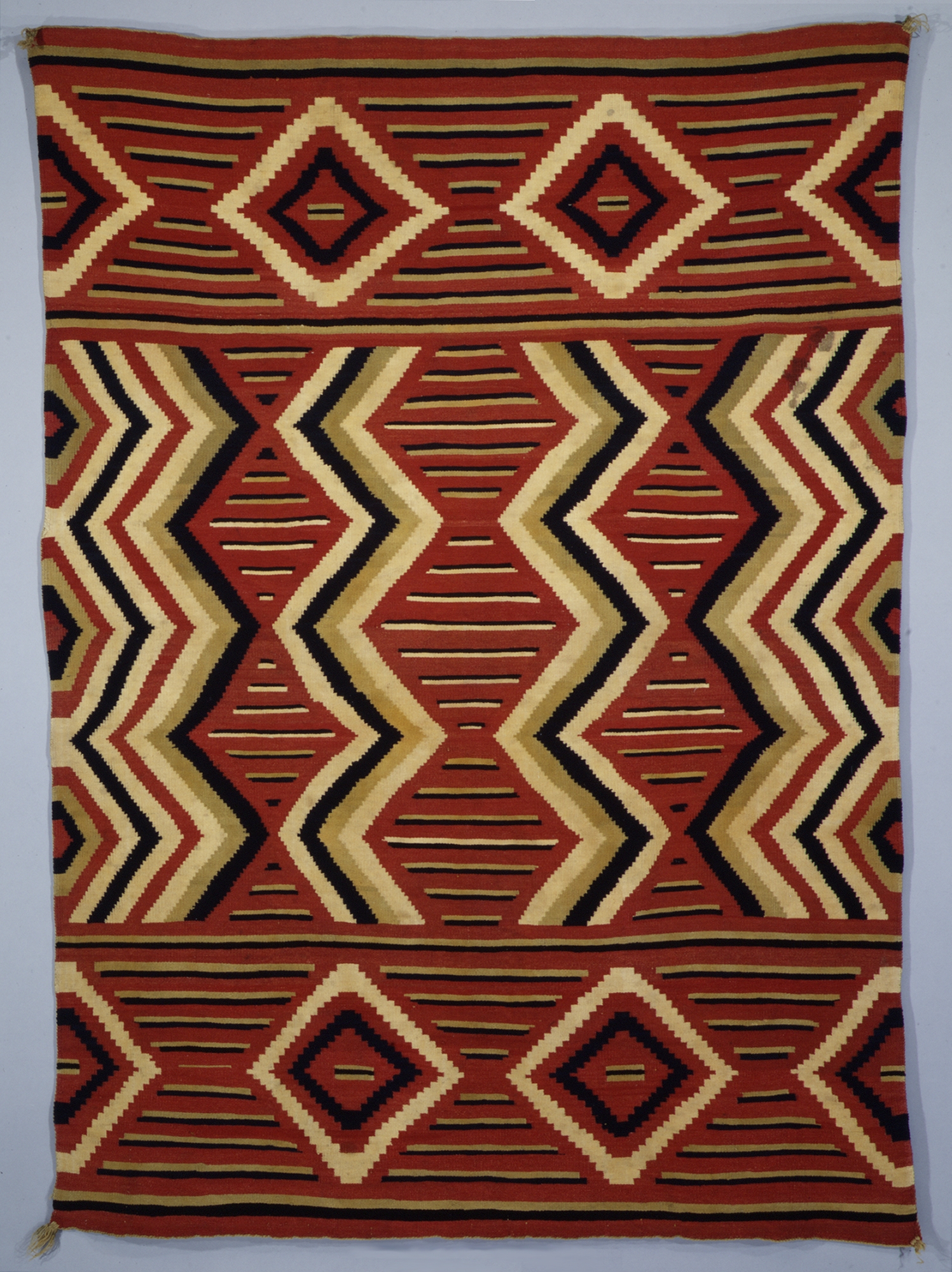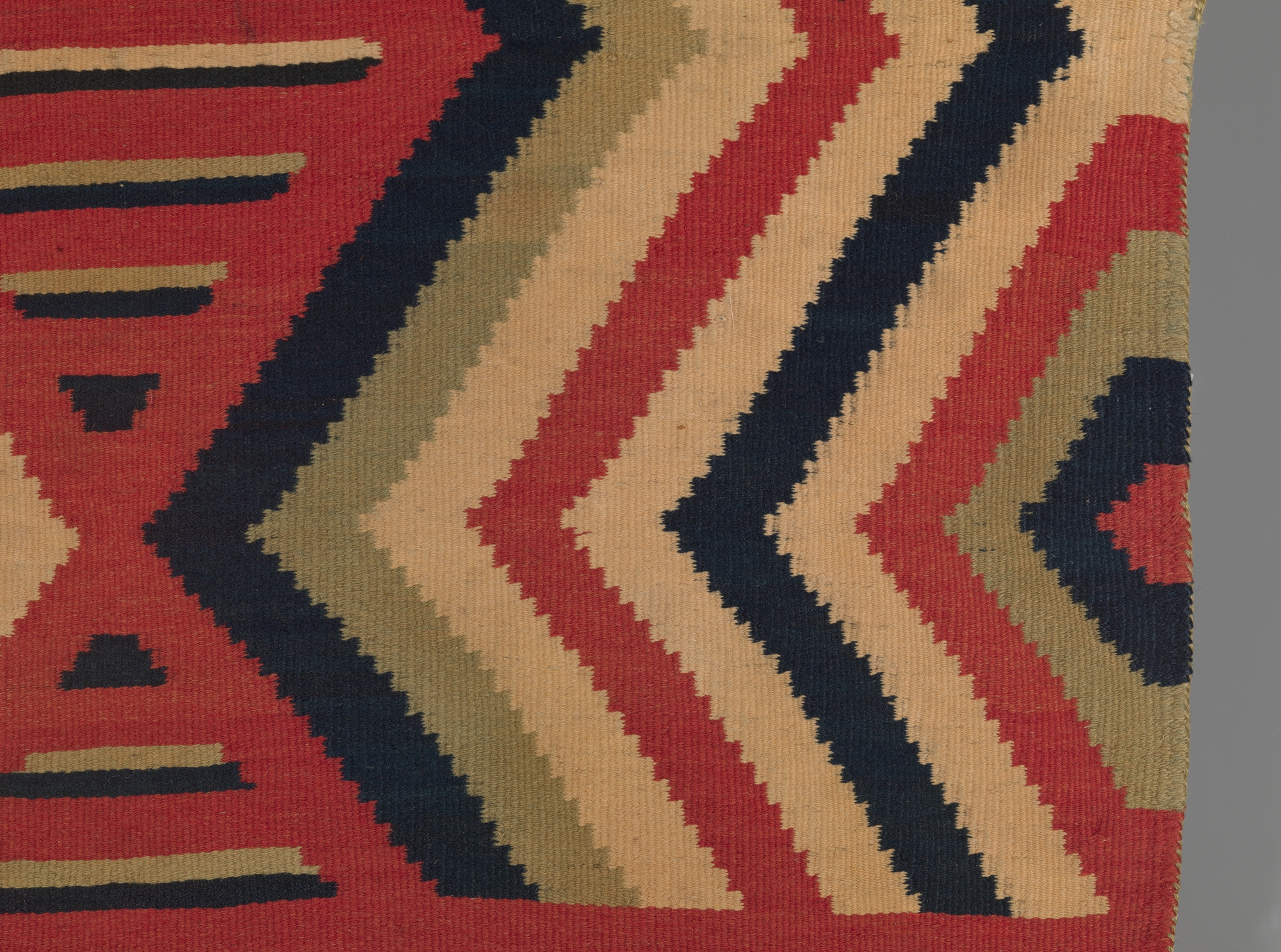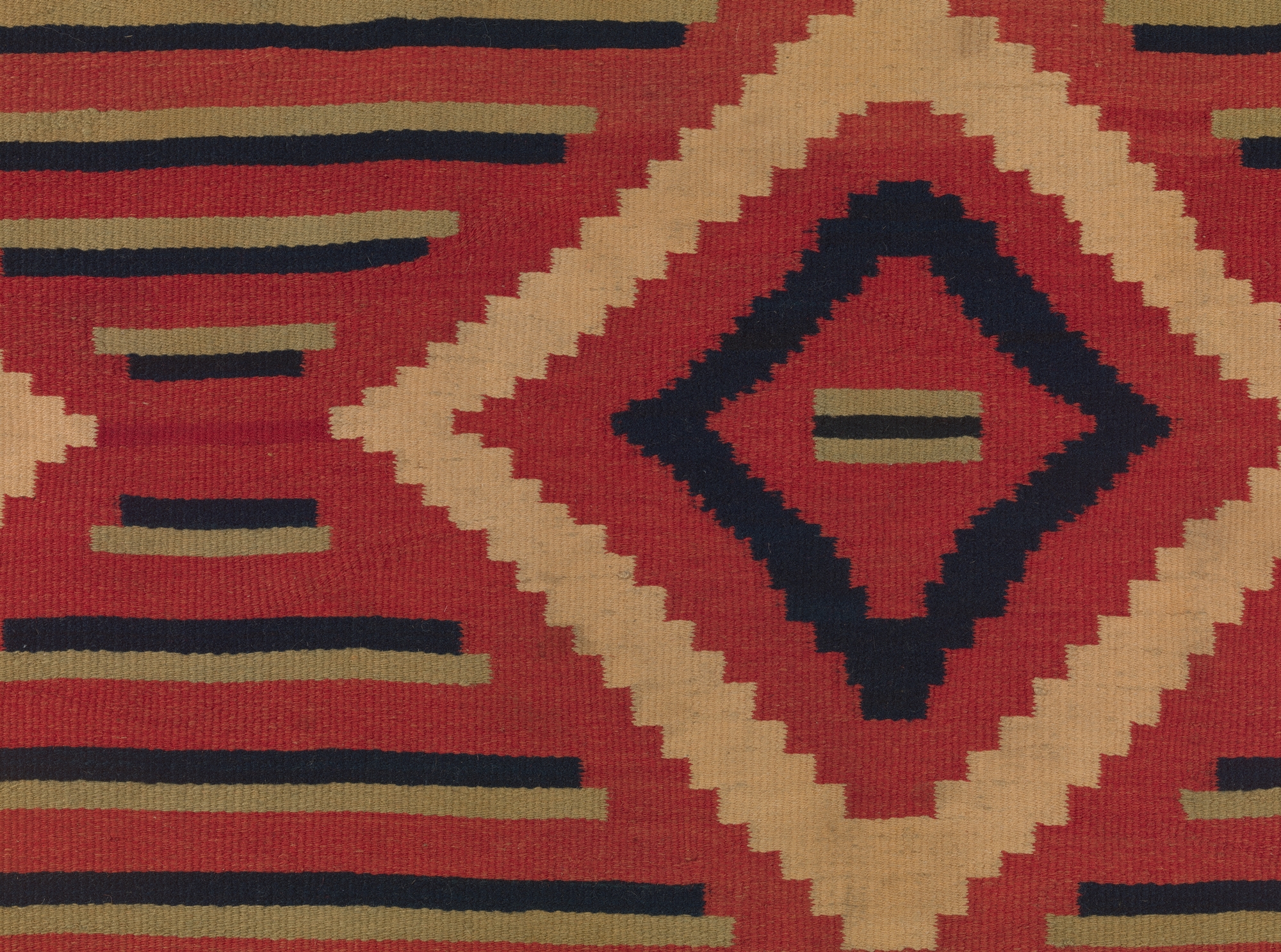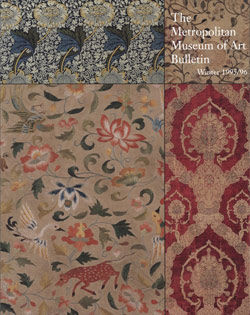Wearing Blanket
Not on view
A long tradition joins Native American and European aspects of textile design and technique in the southwestern United States. The cultivation and weaving of cotton were practiced among the peoples of the region from about the tenth century, but the importation of wool-bearing sheep during the centuries of Spanish domination profoundly shaped the production and use of textiles. Mexico, with its own Spanish-based traditions, was also influential as both a source and a market. In spite of the turbulent events of the nineteenth century, in which the region became part of the United States, many Native American textiles were produced. The Navajos in particular became significant weavers. During the second half of the century a major body of work was made; after 1865 much of it was intended for sale. Serapes, or wearing blankets are prominent in Navajo work of this period. They are strongly colored and vibrantly patterned. Many, as in the present example, elaborated on long-established design themes. Differing weaving traditions are reflected in the horizontals, diamond shapes, and serrated edges, which are characteristically Navajo, and the vertical zigzags, which are based on Saltillo patterning. A town in northwestern Mexico, Saltillo has given its name to a large number of locally made textiles of European-derived design.
Due to rights restrictions, this image cannot be enlarged, viewed at full screen, or downloaded.
This artwork is meant to be viewed from right to left. Scroll left to view more.






